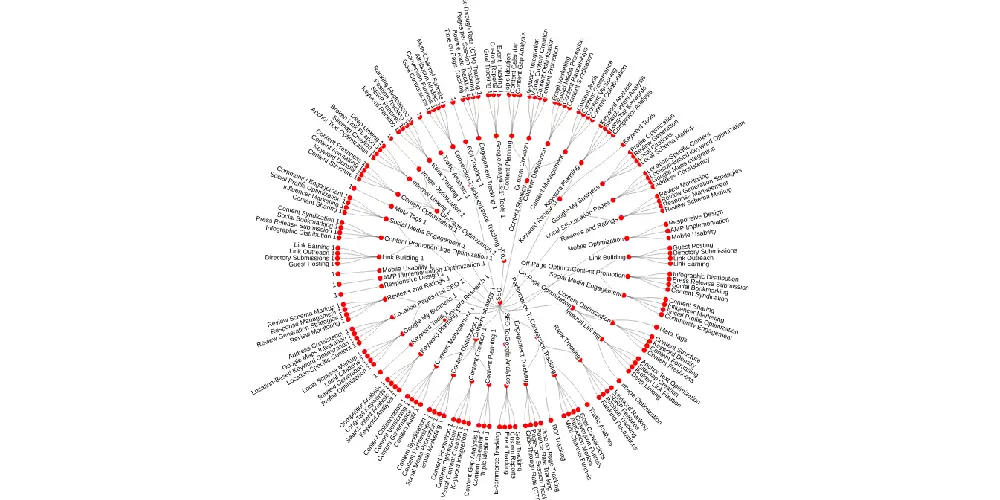Last Updated on October 13, 2025
Internal linking is one of the most underestimated yet powerful levers in on-page SEO. It not only helps search engines understand your website’s hierarchy and context but also distributes authority across pages — amplifying your chances of ranking for competitive keywords.
However, as websites grow, their internal link structures often become chaotic — with orphan pages, redundant links, and uneven link equity distribution. This is where a strategic internal linking restructure comes in: auditing, redesigning, and maintaining a well-organized web of contextual connections that align with your content strategy.
According to HubSpot’s deep dive on internal linking, websites with optimized internal links can significantly boost visibility for difficult keyword phrases, thanks to the efficient flow of link authority.
Why Restructuring Internal Links Matters
An internal linking restructure is not about adding random hyperlinks. It’s about strategically redistributing link equity and improving crawl efficiency.
Here’s what a solid restructuring effort can achieve:
- Better crawlability and indexation: Search engines can discover and rank deeper pages faster.
- Improved user navigation: Visitors spend more time exploring related content.
- PageRank flow: Your most important pages get stronger signals, improving organic rankings.
- Content discoverability: Orphan pages get linked and indexed.
As Ahrefs explains, internal links are crucial because they pass link equity and help search engines determine which pages are most important within your site architecture.
Common Issues in Existing Internal Link Structures
Over time, even well-built sites accumulate linking inefficiencies. Some of the most frequent problems include:
- Orphan pages: Pages that have no internal links pointing to them — effectively invisible to crawlers.
- Deep page hierarchy: Pages buried several clicks away from the homepage reduce crawl efficiency.
- Weak anchor text: Generic or irrelevant anchor text (e.g., “click here”) fails to pass contextual signals.
- Link overload: Overlinking within content can dilute authority and confuse crawlers.
- Broken or redirected links: These disrupt the user journey and waste crawl budget.
Auditing Your Current Internal Linking
Before restructuring, a full internal link audit is essential. The goal is to understand how link equity and crawl depth currently flow across your site.
Key audit steps:
- Run a crawl report: Use online available crawlers like Free website SEO crawler
- Identify orphan and under-linked pages.
- Evaluate anchor text relevance — avoid repetitive or keyword-stuffed links.
- Check link depth — key pages should be reachable within 3 clicks from the homepage.
- Locate broken internal links or redirect chains.
Designing a Restructure Strategy
Once you’ve mapped your current internal ecosystem, you can design a restructured link framework around your core content strategy.
1. Define Pillar and Cluster Pages
Adopt a topic cluster model — where high-authority pillar pages link to and from related subtopics.
For instance, a pillar page on “SEO Best Practices” might link to clusters like “Technical SEO,” “Internal Linking,” and “Site Architecture.”
2. Optimize Anchor Text
Ensure anchors are descriptive and relevant. Use variations like “SEO internal linking guide” instead of “learn more.”
Avoid over-optimization — anchor text diversity prevents keyword cannibalization.
3. Adjust Link Depth
Keep priority pages within 3 clicks from the homepage. A flatter structure improves crawlability for larger sites.
4. Contextual vs Navigational Links
Contextual in-content links carry higher relevance signals than footer or sidebar links. As Ahrefs’ silo structure study explains, cross-linking related topics contextually is more effective than rigid silo isolation.
5. Use Breadcrumbs Wisely
Breadcrumbs enhance user navigation and help search engines understand hierarchy. Structured data markup (Schema.org) can also improve rich results.
Implementing the Changes
Implementation should be methodical — a restructuring can easily break navigation if not executed carefully.
Step-by-step:
- Map URLs: Maintain a sheet of existing and target link paths.
- Clean broken links: Fix 404s and remove unnecessary redirects.
- Update key content: Add contextual links from high-authority pages to underlinked or newly created ones.
- Use internal linking tools: Plugins like Yoast SEO identify orphaned content and suggest relevant internal links.
- Monitor crawl status: Use Google Search Console’s Crawl Stats and Index Coverage reports to ensure proper indexing.
Yoast’s Internal Linking Tool Guide highlights how regular internal link suggestions keep your content ecosystem healthy and interconnected.
Measuring the Impact
An internal linking restructure should yield measurable improvements within weeks, depending on crawl frequency and site scale.
Key Metrics to Track
- Average clicks to page (depth): Should reduce for important pages.
- Crawl efficiency: Fewer crawl errors or missed URLs.
- Organic keyword growth: Pages begin ranking for more relevant queries.
- User behavior: Increased pages per session and reduced bounce rates.
- Orphaned pages count: Should approach zero.
Ongoing Maintenance & Best Practices
A one-time restructuring isn’t enough — your internal link ecosystem should evolve with your content growth.
- Audit quarterly: Use online available Web spiders for SEO.
- Revisit anchor texts: Avoid repeated keyword anchors across articles.
- Integrate new content immediately: Link new posts to relevant pillar pages.
- Track link decay: Remove links to outdated or deleted pages.
- Align with UX updates: Reevaluate internal linking whenever you redesign site navigation.
Remember, internal linking is not just an SEO play — it’s a content distribution strategy that directs both users and search engines to your most valuable assets.
Conclusion
Restructuring your internal link architecture is one of the most impactful and sustainable ways to enhance SEO performance. It improves how crawlers perceive hierarchy, ensures equitable distribution of authority, and simplifies the user journey.
The formula is straightforward:
Audit → Strategize → Implement → Measure → Maintain.
A well-planned internal linking restructure turns your website into a cohesive, discoverable network — where every page supports the other, and your most strategic content gets the attention it deserves.
- Best SEO Content Optimization Tools - November 13, 2025
- People Also Search For (PASF): The Complete 2025 Guide to Smarter SEO Optimization - November 11, 2025
- Content Pruning: A Detailed Guide to Improve SEO - October 17, 2025




